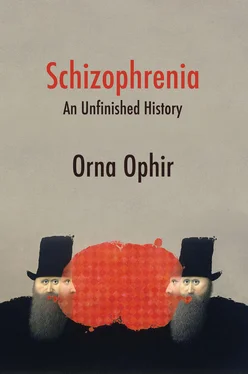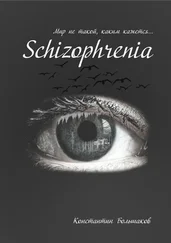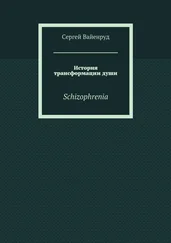Just as he was unable to fully liberate himself from the stronghold of Galen’s humoral doctrine, Paracelsus also remained influenced by the ancient idea that celestial bodies (the planets and stars) exerted powerful forces on all terrestrial forces of nature, which could be harnessed to heal the body and mind. Furthermore, the ethical dimension that remained from Galenic medicine was still widely held, and the belief that immoral behavior led to an imbalance in the body, making it weak and penetrable by hostile forces, was popular. Preventive measures thus included both bodily and spiritual hygiene. In most cases, the physical body and the metaphysical soul were largely seen as treatable. While physicians aimed to restore balance in the body by manipulating the six non-naturals, the clergy used “soul remedies” like confession, communion, pilgrimage, and exorcism, the latter mostly as a remedy of last resort to balance out the disturbances of the soul. 79
The early moderns thus understood madness as being either the result of an imbalance in the body, or as an infiltration by a foreign hostile force – whether in the natural form of a poison or in the supernatural guise of demons and evil spirits. The imbalance of humors and their qualities was further attributed to changes in the external, terrestrial, or celestial environment, and was at times seen as deriving from the mad person’s unregimented behavior (such as disorganized diet, sleep, exercises, etc.). A disequilibrium of the body was itself considered a possible precondition for a qualitative change, caused by the invasion of the foreign agent that caused the madness in question. According to the first interpretation, sanity could be restored by reinstating quantitative balance. According to the second, the different quality – and the invasive, foreign element – needed to be expelled in toto .
Modern Madness: A Disease Entity, a Natural Kind
Some of my unfortunate patients labored under the horrors of a most gloomy and desponding melancholy. Others were furious and subject to the influence of a perpetual delirium. Some appeared to possess a correct judgment upon most subjects, but were occasionally agitated by violent sallies of maniacal fury; while those of another class were sunk into a state of stupid idiotism and imbecility. Symptoms so different and all comprehended under the general title of insanity, required on my part, much study and discrimination. (Philippe Pinel, A Treatise on Insanity , 1806) 80
Like other doctors working in hospitals and asylums during the mid-eighteenth century, Philippe Pinel, chief physician at the Salpêtrière, noticed the many different mental sufferings that were all classified under the broad title of insanity. Dissatisfied with the lack of discrimination between them, he writes:
It is to be hoped, that our system of classification, independent of its methodical clearness and discrimination, will continue towards the establishment of proper rules for the internal government of lunatic hospitals and serve to discover or confirm some general indications of treatment, which in order to avoid empirical experiments, ought to be respectively adapted to each species and variety of mental derangement. (Philippe Pinel, A Treatise on Insanity , 1806) 81
It was during this time, as the first “lunatic hospitals” emerged, that physicians tried to systematically “carve nature at its joints.” This meant studying the genus of insanity and classifying its varied species, creating distinct categories of insanity based on their different symptoms, hoping to offer each distinct illness the treatment it required. As German E. Berrios and Ivana S. Marková have amply documented, this process of demystifying madness may have had its roots in Enlightenment thought. Be that as it may, the weakness of its premises and procedure would quickly become all too clear. After all, if indeed madness is, first and foremost, a cultural object with a historical index, and as such not conducive to being framed or reframed as a natural kind, to be fixed and measured objectively (like gold, tree, or tiger, each of which could presumably be easily “carved at the joints”), then the aforementioned classificatory project never stood much of a chance and, in all likelihood, could never have been accomplished completely. 82
As stated above, during the seventeenth century, the Galenic view, which considered madness as a functional disturbance of the body caused by an imbalance of the four humors or the six non-naturals, always existed side by side with spiritual and metaphysical explanations that conceived madness as the result of a foreign invasion (and, hence, proposed remedies to expel these very invaders). But, as the eighteenth century brought about a general secularization of thought and life, new questions regarding human beings and the nature they are part of (developments we now associate with the so-called “Scientific Revolution”) dramatically changed the moderns’ idea of madness overall.
According to Berrios and Marková, during this time, madness increasingly began to be viewed as a natural kind . Like plants, physical and mental diseases were now seen as sharing common, ontological features that can be used to classify them once and for all. During this period, most classifications applied the method devised by the father of modern taxonomy, the Swedish botanist, zoologist, and physician, Carl Linnaeus (1707–78). This classificatory method used a privileged set of features of the species and phenomena at hand to group both plants and diseases. In his 1759 work, Genera Morborum [ Classification of Diseases ], Linnaeus argued that the system that served the botanist might as well also serve the physician. By classifying diseases into classes, genera, and species, physicians can gain more clarity about disease: “Symptoms are to disease as leaves and stems are to plants.” 83Thus, for example, his Class V, the Mentales (“Diseases in which the Functions of the Mind are disturbed”) contains “1. Ideales : those in which the Judgment is principally affected,” among them Delirium, Mania, and Melancholia; “2. Imaginarii : those in which the Imagination is principally affected,” such as Vertigo and Hypochondriasis; and “3. Pathetici : those in which the Appetites and Passions are principally affected,” such as Bulimia, Erotomania, and Nostalgia. 84
Linnaeus’ close friend and collaborator, François Boissier de Sauvages (1706–67), a professor at the medical school of Montpellier, was a vigorous classifier, who argued that medicine should follow the botanical model of classification by observable signs. He criticized the Galenic tradition, which classifies diseases according to imaginary anatomy and hypothetical causes, instructing his followers to stick to the testimony of their senses.
Unlike these botanical models, which were based on the observed characteristics of the disease, by the late eighteenth century, William Cullen (1710–90), an influential professor of medicine and physics at the University of Edinburgh, suggested diseases be classified according to their possible etiology, that is, according to the cause of their disorders and natural history. In his First Lines of Physic , Cullen gave the name neurosis to a class of diseases that, in his definition, included irritation of the “nerves,” rather than focal lesions in the brain per se. 85One of the four “orders” of the neuroses was a group of “insanities” or so-called “ vesaniae ,” whose examples included amentia (idiotic insanity), melancholia (unsound mind in a sorrowful manner), mania (unsound mind in a furious manner), and oneirodynia (intense mental disturbance associated with dreaming). 86
Читать дальше












